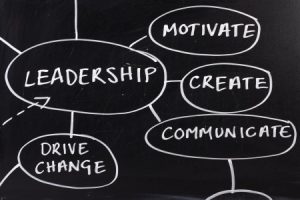Yes, there really is such a thing as Relocation Stress Syndrome!
Relocation Stress Syndrome, or RSS, was approved as a formal diagnosis in the early 1990’s. (And here you were thinking that everyone else must be so much better at relocating and that it was just YOU who weren’t handling this very well – not true!)
You are not alone if a relocation is stressing you out or making you feel like, perhaps, you’ve lost your marbles.
Although anyone can be impacted, the elderly are at greater risk of feeling the effects of RSS. Many NAPO professionals are skilled with organizing and managing relocations and the sometimes unpleasant side-effects. Some even specialize in senior moves exclusively!
Continue here to read more from NAPO Senior Move Management expert, Susan Osborne, as she describes the symptoms and strategies for facing this not uncommon relocation affliction.
Does that surprise you? It seems like a low estimate to me, but I’m a certified professional organizer. The nature of my business may result in meeting more people with ADHD.
With such a large segment of the population diagnosed with ADHD, it’s about as common as freckles. One would think it was simply accepted as one of the different thinking styles (visual, auditory, kinesthetic, etc.) Instead, I’ve met people who avoid the diagnosis whether they’ve actually received a formal diagnosis or a family member has “diagnosed” him or her. If you are wondering why anyone would resist, try to put yourself in his or her shoes.
We live in a judgmental society. Some people have shared their reasons: fear of discrimination, avoiding the perceived label of a mental health disorder, believing a diagnosis won’t make a difference or referencing the many myths associated with ADHD. Therefore, I’d like to share some information in hopes of dispelling just a few of the myths that perpetuate a stigma about ADHD and may keep some from seeking support.
ADHD always manifests itself in hyperactive, inattentive, and impulsive children. In fact, ADHD can look different in different people. Some children and adults may have trouble with hyperactivity while others have difficulty getting started at all. One person with ADHD might struggle with wandering thoughts while another can hyper-focus on a topic of interest for hours.
Some believe adults outgrow ADHD. The truth is it stays with an individual throughout their lives. However, depending on the individual, it can begin in youth as hyperactivity and impulsivity and transform into inattentiveness and problems with relationships.
Some believe medication will “fix” their ADHD symptoms. The purpose of medication is to help one focus.
Individual needs vary. Medication, cognitive behavioral therapy (CBT) and/or psychotherapy may be necessary to provide life-management tools, and, when appropriate, working with a professional organizer can help provide organization and personalized systems to aid efficiency and productivity. Experience as a professional organizer and family advocate (not as a therapist) has taught me that formal diagnosis is so important. Many issues can mirror ADHD, even stress. Therefore, diagnosis by a psychologist or a clinical neuropsychologist should be part of a reliable diagnosis and medical plan.
Creating routines, keeping often used items like keys in the same place every day, using task lists, breaking projects down into smaller tasks, and using your electronic calendar. These are just a few ways to create structure and ease stress in your life.
This term means that issues such as anxiety, depression, and mood disorders can sometimes accompany ADHD. Studies indicate a genetic or physiological link between ADHD and other diagnoses.
Feedback about arriving late, missing deadline, and conforming to “typical” classroom and workplace standards can often be negative for the person with undiagnosed ADHD.
Hopefully, more discussion and understanding about ADHD, its symptoms, and potential comorbidity will result in people seeking and accepting help. In addition, general awareness may help others to create a more understanding environment, reducing the stigma around this and other diagnoses.
Arm yourself with information. Knowledge is power!

1) Make time every week to plan your work – when you take the time to identify what is important for the week you know what to say yes to and what to say no to. This results in getting your most important work done.
2) Make your meetings count – only hold meetings when you have a purpose and don’t rush through the meeting. Give the team the time it needs to discuss a topic and make a decision. All too often I see leaders rushing to get to the next agenda item and never making a decision. That is a real time waster!
3) Empower your team – Don’t waste your team member’s time. Don’t ask them to do something and then ignore their recommendations. Give enough authority so that team members can make a difference. This is what drives productivity. When team members are motivated they become highly engaged and deliver great work.
4) Create a culture where it is ok to be wrong – Open-mindedness and permission to take risks create a culture in which team members are willing to step up and give more. When it’s ok to try something different, or float a wild idea, or pilot an uncertain project, the team not only finds greater opportunities for success but the members feel a sense of ownership and are motivated to try harder.
5) Work to the Plan – ensure that everyone’s priorities support the big picture, and be sure that everyone on the team is clear about what exactly the plan is. Goals are the pathway to success. They help the team determine what to say yes to and what to say no to. And sometimes, even more importantly, they show the team that they have been successful.
6) Be Positive and Lead by Example – this oldie but goodie is critical. The leader who leads with enthusiasm, openness, and conviction has great impact on the success of the team. When the leader displays an optimistic attitude, the team follows, and work is always more fun that way. And when people enjoy what they do, much more gets accomplished.
If you’ve gotten to this part of this post and said to yourself – “well that’s fine and dandy – but I’m not a leader…” think again. The definition of a leader is one who influences behavior. I’m sure you want to do that – for your family, your work group, your volunteer groups and yourself. Now go read these tips again applying them to you and watch your productivity soar!
Over the past 3 years, I’ve called three different NAPO colleagues to help me with my own organizing projects. Each time it was a fantastic experience. Not only did I get stuff done, I really got an appreciation for what it feels like to be the client AND as a result, I am a better Productivity and Organizing Consultant!
I hired professional organizers (or PO’s) to help me:
Here are some key takeaways from these sessions:
I was thrilled by what I got done: cleaned out an overwhelming amount of stuff so I could close down my mother’s apartment, became very tech-comfortable, and am feeling stylish and well-dressed like never before. The gratitude I feel towards these organizers is immense.
I close by urging all PO’s who have never hired another Professional Organizer to do so. Everyone can improve their productivity and up their level of being organized. And you’ll have much greater understanding and empathy for your clients!

As I lay in bed for a week from an illness this summer, I took the time to write this article for the NAPO-GPC blog. Even getting ill didn’t stop me from getting things done. I knew the deadline was quickly approaching so I decided to write about getting ill! Here are a few tips for how to organize yourself or help out a friend when stuck in bed.
 the house for me so I could stay hydrated. Chamomile tea in the den. Peppermint tea in the kitchen, drinks in my bedroom and water in my bathroom. I do not mind room temperature drinks but if you need yours cold/hot there are some wonderful thermal drinking vessels out there.
the house for me so I could stay hydrated. Chamomile tea in the den. Peppermint tea in the kitchen, drinks in my bedroom and water in my bathroom. I do not mind room temperature drinks but if you need yours cold/hot there are some wonderful thermal drinking vessels out there.My other advice would be, don’t get sick in the summer! What a bummer! I totally missed a huge rain storm. While everyone else was panicking, I was sound asleep. I missed some beautiful sunny days and God knows what was going on in my garden. I hope you stay well, but if you do feel terrible try these tips to help you stay on track.
Life in the 21st century is anything but simple. Our world feeds us countless messages defining what we need in order to be happy, successful, and fulfilled. We’ve all heard these messages, either directly or indirectly, and we’ve all bought into at least some of the hopeful promises that our lives can improve…if only we [you fill in the blank].
But the true result of our modern life, trying to keep up with our packed schedules, overflowing to-do lists, and material abundance is sadly, not satisfaction and peace. Rather, we have stress, anxiety, broken relationships, and a LOT of stuff.
So, in the complexity of our technological age, what does it mean to simplify? What does a simpler life look like for an ordinary family keeping up with work, school, and countless demands? Regardless of the season of life—a young couple, family with children, or empty nesters—how can any of us find a greater level of simplicity in our noisy, chaotic, energetic world?
The beautiful truth is that the concept of “living simply” looks different for each person and every family. What I deem a simpler, less complicated life for my family will undoubtedly look different from your ideal. The challenge is that it takes effort to figure out how to step out of a cluttered and demanding lifestyle to pursue a more balanced and satisfying experience of daily life.
I want to highlight the two qualities that define a simpler life, according to Deborah DeFord in her book, The Simpler Life (The Readers Digest Association, Inc, 1998). These are integrity and intentionality.
Integrity is defined as a state of being whole and undivided. This ideal means I need to look at what is important to me, and then live according to those goals and values. If I believe physical fitness is important but never make time in my week to get up and move, then I am not living an integrated life. Rather, to live according to what I value, I will commit to walking 3 times each week and schedule it on my calendar. It’s as simple as that: Live in accordance with what is important to you.
Intentionality means we act with purpose. We consciously decide the choices we make throughout our day. Thus, to be intentional requires a certain mindfulness. If we are always “going with the flow,” we may feel spontaneous, but we are not in control of our day. We are reacting rather than being proactive. I must admit that I sometimes fell prey to impulse purchases, buying things because they were on sale, even though they were not items on my list. The result was I spent money I hadn’t planned to spend, brought home things I might not actually use, and then had to find a place to store my latest bargains. Learning to live with intention means pausing to evaluate my true needs.
How will pursuing integrity and intentionality help you lead a simpler life?
Only you can decide what is most important to you. Only you can be in control of the way you spend your time, the things you buy, and the relationships you pursue. When you proactively make decisions on what you need in your life and shut out the noise of what others are proclaiming, you will have the ability to pursue only those people, activities and things that give meaning to your life. Saying “no” to the unnecessary is saying “yes” to what is most valuable—which leads to true satisfaction, contentment, and peace.